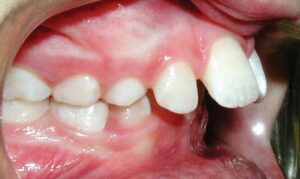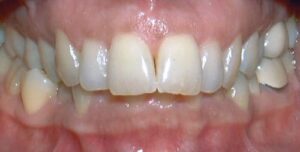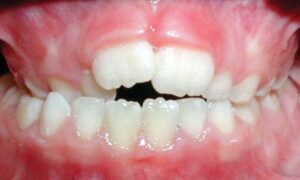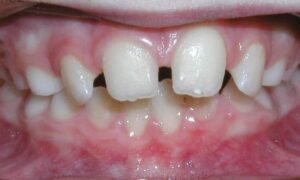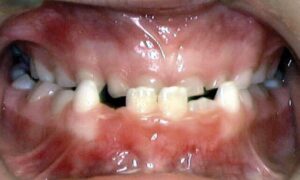Orthodontic problems can affect anyone – in fact, our teeth are almost never naturally perfect. Malocclusion, or a “bad bite”, can cause problems with chewing, oral hygiene, speaking and aesthetics. A bad bite can be genetic, or can be caused by thumb sucking, dental disease, poor dental hygiene, accidents, birth defects or other medical conditions.
Being educated about the orthodontic problems you or your child may have is the first step to correcting it. During your initial exam, Dr. McMahon will take the time to thoroughly review the diagnosis and treatment options available so you can make the best decision for you and your family.
Orthodontic treatment performed by Dr. McMahon can improve both the functionality of your bite and the appearance of your smile. Below are some examples of the most common orthodontic problems.
Upper Front Teeth Protrusion
The appearance and function of your teeth are impacted by this type of bite. It is characterized by the upper teeth extending too far forward or the lower teeth not extending far enough forward.
Overbite
The upper front teeth cover too much of the lower front teeth, sometimes causing the lower front teeth to bite into the roof of the mouth.
Crossbite
Ideally, all of your top teeth should sit outside your lower teeth. If you have a crossbite, the upper teeth sit inside the lower teeth, which may cause tooth wear, recession, and misaligned jaw growth.
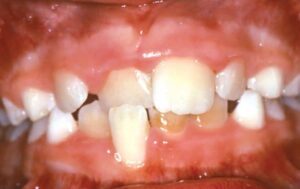
Openbite
If the upper and lower front teeth do not overlap, then you have what is known as an openbite. This type of bite may make it difficult to bite into your favorite foods. Openbites are sometimes cause by thumb sucking and may lead to a number of unwanted habits, such as tongue thrusting.
Crowding
Crowding occurs when teeth have insufficient room to erupt into the arch. Crowding can often be corrected by expansion, and many times, tooth removal can be avoided.
Spacing
Many people have gaps or spaces between their teeth. Spacing problems can be a cosmetic or esthetic issue, but gaps can also allow for food traps, which can become a gum issue. You may also have spaces if you are missing teeth or have small teeth. Dr. McMahon will work closely with your general dentist to make a plan to either close or restore the spaces.
Underbite
In an underbite, the lower jaw extends out, causing the lower front teeth to sit in the front of the upper front teeth.
